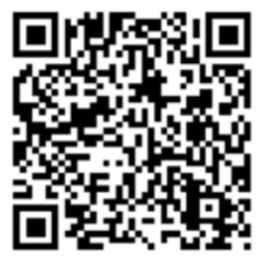-
Item NameMineral oil hydrocarbons (MOSH/MOAH)
-
项目名称矿物油
-
百书编码wk.hyr.21.0003
-
主编Gary
-
化学式 /
-
修改人 Gary
-
Other Name/
-
其他中文名称
MOAH:烷基化芳烃/矿物油芳烃
MOSH:矿物油饱和烃
POSH:聚合物低聚物饱和烃/聚烯烃的低聚烃类
PAO:聚α烯烃
-
项目简介
矿物油是复杂的混合物,主要由矿物油饱和烃(MOSH)和大多数时候的烷基化芳烃(MOAH)组成。两组物质均包含不同分子大小的线性,支链以及环状化合物。
MOSH =矿物油饱和烃:链烷烃状,开链,通常支链的烃(例如烷烃)和环烷样的环状烃(环烷烃)
MOAH =矿物油芳烃:主要由高度烷基化的单芳环和/或聚芳环组成的烃
POSH =聚合物低聚物饱和烃:塑料聚乙烯或聚丙烯的低聚物。 化学上与MOSH相似,无法进行分析分离[3]
各个矿物油馏分的化学成分和百分比组成可能会很大不同,具体取决于从原油获得的矿物油产品的来源和生产过程。因此,原油和工业矿物油包含相对较高的MOAH含量,而精制药用矿物油通常仅包含痕量或无可检测含量的芳族成分。
此外,某些标记物可以提供有关污染源的信息。例如,二异丙基萘(DIPN)是在无碳复写纸中用作溶剂的化合物,在生产废纸时无法将其完全去除。因此,在食品中检测DIPN可以表明与包含废纸的包装材料直接或间接接触。另外,POSH(聚烯烃的低聚烃类)和PAO(聚α烯烃)在在线LC-GC-FID分析的色谱图中显示出特征性的信号模式 [1]POSH是低聚物质,可能会从塑料包装(PE和PP)中迁移出来。 PAO是合成的具有短主链和长侧链的异链烷烃,例如在合成润滑剂和粘合剂中。[2]
在环境温度下,迁移的是链长最高达C25的矿物油碳氢化合物。链长超过C25的MOH的迁移需要直接接触或提高温度。[3]
-
Item Introduction
Mineral oils are complex mixtures mainly consisting of saturated hydrocarbons (MOSH) and most of the time alkylated aromatic hydrocarbons (MOAH). Both groups of substances contain linear, branched as well as ring-shaped compounds of different molecular sizes.
MOSH = Mineral Oil Saturated Hydrocarbons: paraffi n-like, open-chained, commonly branched hydrocarbons (e.g. alkanes) and naphthene-like cyclic hydrocarbons (cycloalkanes)
MOAH = Mineral Oil Aromatic Hydrocarbons: hydrocarbons mainly consisting of highly alkylated mono- and/or poly-aromatic rings
POSH = Polymer Oligomeric Saturated Hydrocarbons: oligomers of the plastics polyethylene or polypropylene. Chemically similar to MOSH and cannot be separated analytically[3]
The chemical and percentage composition of the individual mineral oil fractions can vary greatly depending on the origin and production process of the mineral oil products obtained from crude oil. Thus, crude and technical mineral oils contain relatively high contents of MOAH, whereas refined medicinal mineral oils usually contain only traces or no detectable contents of aromatic components.
In addition, certain marker substances can provide information on the source of contamination. Diisopropylnaphthalenes (DIPN) for example are compounds that are used as solvents in carbonless papers which cannot be removed completely during the production of waste paper. Detection of DIPN in food can therefore indicate direct or indirect contact with packaging materials containing waste paper. In addition, POSH (oligomeric hydrocarbons from polyolefins) and PAO (polyalphaolefins) show characteristic signal patterns in the chromatogram of the online LC-GC-FID analysis and allow to identify a contamination with plastic components and synthetic lubricants.[1] POSH are oligomeric substances,potentially migrating from plastic packagings (PE and PP). PAO are synthetic isoparaffins with short main and long side chains used e.g. in synthetic lubricants and adhesives.[2]
At ambient temperatures, it is the mineral oil hydrocarbons with a chain length of up to C25 that migrate; the migration of MOH with a chain length over C25 requires direct contact or elevated temperatures.[3]
-
主流测试方法
HPLC-GC-FID
德国ifp公司:可以使用 高分辨率GC×GC-ToF验证阳性结果并进一步表征矿物油成分,食品包装材料的迁移和功能障碍测试,识别污染源[1]
-
Major Test Method
HPLC-GC-FID
verification of positive results and further characterisation of mineral oil components by high-resolution GC×GC-ToF migration and functional barrier tests on food packaging materials
identification of sources of contamination[1]
-
source
packaging materials (recycled paper, printing inks, jute bags)
lubricating oils from harvesting and processing machines
exhaust gases from the environment
dressings of corrugated board containing mineral oil
food additives (separating agents, coating agents, glazing agents, anti-dusting agents)[1]
In these cases, it is only the MOSH analogues that are transferred because the substances are usually purifi ed products such as approved paraffi n-like waxes that are derived from refi ned mineral oils or white oils[3]
-
来源
可能的污染源是包装材料(再生纸,印刷油墨,黄麻袋)
收割机和加工机中的润滑油
来自环境的废气
含矿物油的瓦楞纸板敷料
食品添加剂(分离剂,包衣剂,上光剂,防尘剂)[1]
如白油、蜡等食品添加剂是 MOSH 一大来源[3]
-
事件
2019年1月15日,香港消费者委员会发布了一份检测报告,对香港市面上58款曲奇及甜酥饼样本进行检测,结果发现近9成样本共51款产品检出污染物,包括属于基因致癌物的环氧丙醇和丙烯酰胺,以及有害物质氯丙二醇( 3-MCPD)。这其中,最为消费者熟悉的是无印良品的榛子燕麦饼干和谢霆锋的品牌“锋味”曲奇。
-
Event/
-
污染对象/作用对象
整个食品和食品包装产业链中所有可能的进入途径。[3]
-
Where did it appear
It now includes all possible routes of entry along the entire value chain for food, and food packaging.[3]
-
毒性/
-
toxicity
According to the current state of scientific knowledge, there is no sufficient toxicological evidence to prove a health risk to humans from saturated mineral oil fractions (MOSH). Meanwhile, MOAH are suspected to be carcinogenic (especially PAH-like compounds with 3-7 ring systems), therefore their levels in food should be reduced according to the ALARA-principle. (as low as reasonably achievable).[1]
Contrary to the structurally related and cancerogenic PAH, MOAH are a complex mixture of compounds with differing and mainly unknown toxicities. According to animal testing studies, mixtures of lowviscosity mineral oils are stored within the body, leading to accumulation and damages within the liver, the heart valves and lymph nodes.[2]
-
控制方法
德国联邦风险评估局(BfR)发布了有关大型表面干燥食品与回收纸板直接接触的警告。作为短期选择,建议转换为原始纤维产品或使用能有效阻止迁移的内袋,例如铝或PET袋。[2]
通过更换为非矿物油或低矿物油的墨水,可以在很大程度上将印刷食品包装所造成的污染降到最低[3]
-
Control Method
Assessment (BfR) has issued a warning regarding the direct contact of large surface dry foods with recycled cardboard. As short term option, the changeover to virgin fibre products or the use of inner bags effectively blocking migration such as aluminium or PET bags are recommended.[2]
It has been possible to minimise, to a large extent, contamination caused by printed food packaging by changing to non-mineral oil or low-mineral oil inks[3]
-
法规要求
BfR提出了食品中矿物油MOSH的以下指示性值:
•C10 – 16:12 mg / kg食物
•C17 – 20:4 mg / kg食物 [2]
(碳链低于C16的MOSH不会在人体中蓄积[3])
目前,对于食品中的矿物油成分,既没有具体的法律法规,也没有最高含量。
2017年2月,发布了修订德国商品条例(“矿物油条例”)的第22条条例的第4草案。它提供了功能性屏障的使用,以确保不会发生MOAH从食品中含有食品接触材料的废纸发生可检测的过渡的情况。食品的检出限为0.5 mg / kg。
2019年,欧盟委员会联合研究中心发布了《 JRC指南》文件,内容涉及监测食品和食品接触材料中矿物油烃的采样,分析和数据报告。本文建议采用统一的测定矿物油的程序,从取样开始到结果显示结束,以实现更好的分析结果可比性。
此外,LändergemeinschaftVerbraucherschutz(LAV)与Lebensmittelverband Deutschland e.V合作出版。某些食品类别中矿物油的指导值这些含量已通过统计学确定,旨在代表根据良好生产规范要求降低矿物油含量的当前标准。指导值是指JRC指南的标准化分析和结果表示。 [1]
-
Regulatory requirements
The Federal Institute for Risk Assessment( BfR )suggested the following indicative values for mineral oils in food:
• C10 – 16: 12 mg/kg food
• C17 – 20: 4 mg/kg food[2]
Currently, there are neither specific legal regulations nor maximum levels for mineral oil components in food. In February 2017, the 4th draft of the 22nd Ordinance amending the German Commodities Ordinance ("Mineral Oil Ordinance") was published. It provides the use of functional barriers to ensure that no detectable transition of MOAH from waste paper containing food contact materials in food takes place. A detection limit of 0.5 mg/kg of food applies here.
In 2019, the Joint Research Center of the European Commission published the JRC Guidance document on sampling, analysis and data reporting for the monitoring of mineral oil hydrocarbons in food and food contact materials. This document recommends a uniform procedure for mineral oil determination, starting with sampling and ending with the presentation of results, in order to achieve better comparability of analytical results.
In addition, the Ländergemeinschaft Verbraucherschutz (LAV) have published in cooperation with the Lebensmittelverband Deutschland e.V. guidance values for mineral oil in certain food categories These levels have been determined statistically and are intended to represent the current standard for the reduction of mineral oil contents according to a Good Manufacturing Practice. The guide values refer to the standardised analysis and presentation of results of the JRC guidelines. [1]
-
参考文献
[1] Institut für Produktqualität GmbH WEBSITE
https://www.produktqualitaet.com/en/food/contaminants/mineral-oil-hydrocarbons-mosh-moah.html
[2] Eurofins WEBSITE flyer
https://www.eurofins.de/food-analysis/analytical-testing/organic-contaminants/mineral-oils-mosh-posh-moah/
[3] fooddrinkeurope.eu
PREVENTING THE TRANSFER OF Undesired Mineral Oil Hydrocarbons into Food
-
感谢支持

 高级搜索
高级搜索
 Hi~ 欢迎登录合优质检!
Hi~ 欢迎登录合优质检! 发布求助
发布求助 入驻通道
入驻通道
 1 步确信
1 步确信 4 洲际贸易支持
4 洲际贸易支持 120 严选服务商
120 严选服务商 25000 可靠能力
25000 可靠能力 人工客服
人工客服




 合小服
合小服
 发布求助
发布求助
 我的工单
我的工单
 我的订单
我的订单
 返回顶部
返回顶部